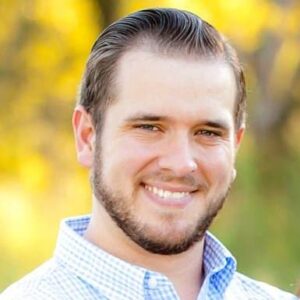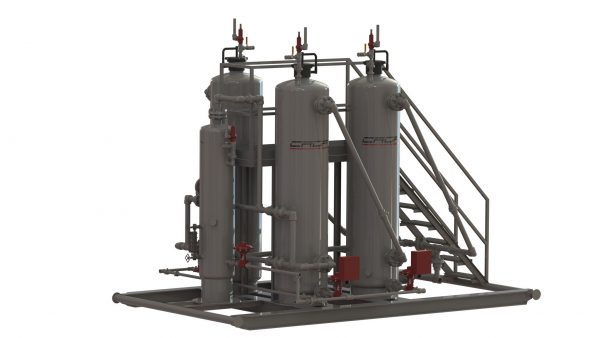In this blog, we are going to take a closer look at how CROFT’s Passive Dehydration System, also known as the PDS, works. This is Croft’s preferred alternative to the glycol unit for natural gas dehydration. Dehydration is a critical process required to meet pipeline specifications. Making sure your gas is properly dehydrated can help prevent pipeline shut-ins, corrosion, hydrate formation, and slugs.
Our PDS is a very simple yet very effective unit for drying gas. Let me walk you through how our PDS works.
How It Works:
Vessels are filled with our environmentally friendly desiccant, enviro-DRI. Wet gas enters the inlet near the bottom of the vessel, as the gas flows upwards through the vessel into our “enviroDRI” desiccant which is dried via adsorption. When the enviroDRI adsorbs the water, it deliquesces and collects at the bottom of the vessel. This nonhazardous brine solution does not require any special disposal; therefore it can be drained to the water tanks on location.
The dry gas then flows through the outlet into the sales pipeline or wherever needed.
Glycol Comparison:
So, you might be wondering what really are the benefits of using a PDS over the common GLYCOL?
Unlike the PDS the GLYCOL contains multiple moving parts, a burner, and pumps. And of course, there are emissions such as Methane, BTEX, and CO2 that can be hazardous to personnel and require environmental permits. The EPA states that a solid desiccant dehydrator reduces emissions by 99% over the glycol system meaning that the PDS can be installed without requiring air permits.
In glycol operations, gas is utilized for the burner fuel in heating up the system, common pneumatic controllers, and through the energy exchange pumps. It takes gas to run the glycol system. The PDS consumes no gas for operations meaning increased sales and increased revenue.
Let’s take a look at servicing the PDS units.
Servicing The PDS:
When you lease or buy CROFT’s PDS units, we make sure to provide you with all the services needed all the time. If your leased unit is in our service area, one of our highly-trained service technicians will make sure to conduct preventative maintenance to ensure proper function and efficiency of the unit.
The techs will isolate the vessel they will be working on, depressurizing the vessel following protocol. Once depressurized they will open the enclosure and inspect the enviroDRI inside observing levels and quality of the desiccant. Once the enviroDRI has been inspected the techs will top off the enviroDRI to the appropriate levels. The vessel will be re-pressurized and put back into operation. The techs will then take a measurement to insure outlet specifications are met.
If there are any issues with the unit the service tech will make sure to address them as quickly as possible and notify the client of any problems and recommended solutions. Some of these upstream potential issues include detergent oils from compressors and liquid slugs. Both issues can easily be fixed by using nondetergent oil on the compressor and placing a filter or separator in front of the PDS.
Now that we have discussed servicing the units let talk about capacities.
Capacity:
We offer multiple different unit sizes to handle a wide range of capacities. We have our supply gas dehydrators, single vessels that can handle flows up to 500 Mcf a day, and multi-vessel units to handle larger well designs, and our largest size that can be placed into series for application processing over 100 million a day. With the units’ modular design and excellent turndown rate, CROFT tailors each unit to the client’s specific application, increasing or decreasing the vessels to fit the life of the well.
So now that you know the benefits of the PDS. Let’s take a look at a few examples of applications from our clients.
Applications:
- As seen here in this picture a PDS unit is replacing an existing oversized GLYCOL unit.
- PDS units can be placed on NGL lines, removing water out of the liquid stream.
- This client had a 4-month air permit delay but was able to quickly and easily install our PDS within 4 days.
- Croft units can be trailer mounted for mobilized units on temporary locations or projects.
- PDS units can be placed on barges or small location restrictions since there are no burners.
- PDS units can be placed at gas gathering facilities
- Really PDS units can be placed anywhere, including wildlife reserves since there are no-operating emissions and no burners.
Thanks For Watching:
Thanks for checking out our video, if you have an application your working on, or questions in general, please feel free to contact us at any time. We look forward to working with you soon.












